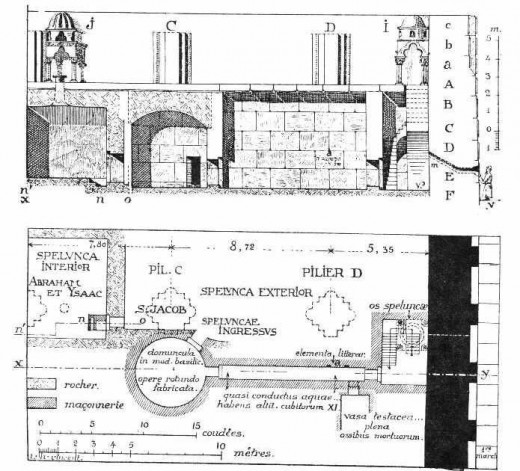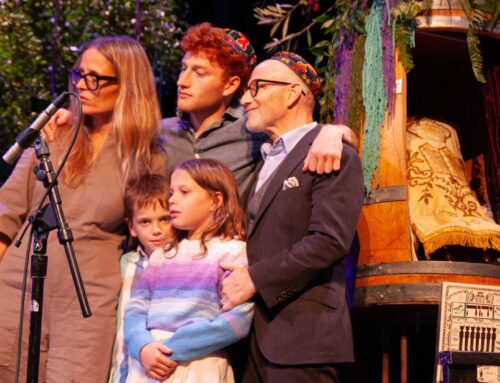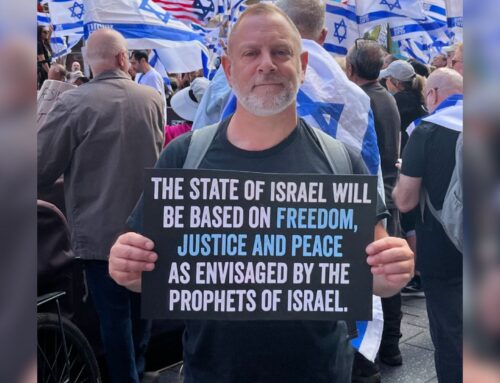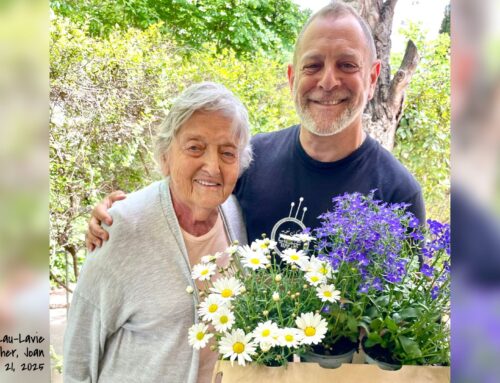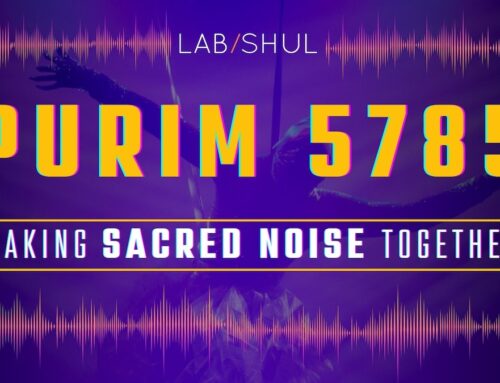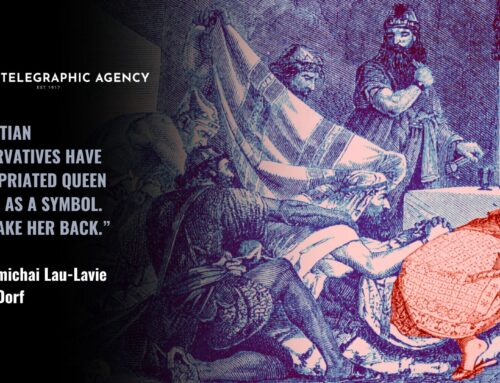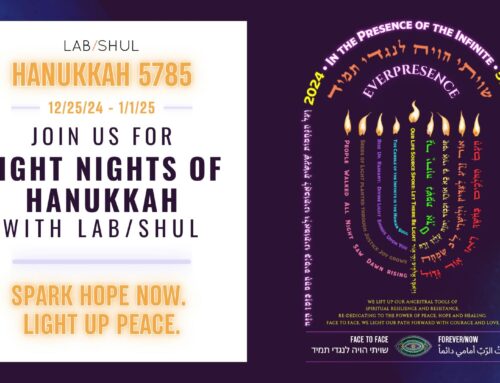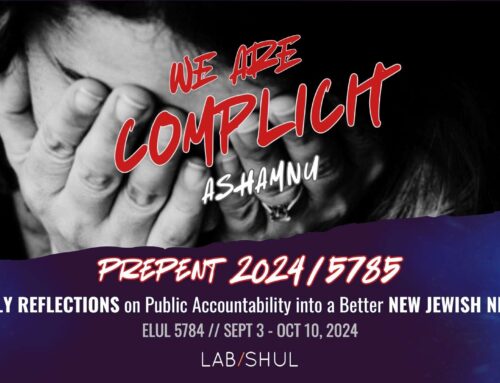Life Beyond the Cave
Honor our Ancestors by Abandoning their Graves.
Amichai Lau-Lavie
Jerusalem
November 2015
“Abraham buried Sarah his wife in the cave of the field of Machpelah” (Gen. 23:19)
Within 30 minutes of arriving in Israel yesterday, sitting in my mother’s car on the road to Jerusalem, an invitation pops up on my iphone. Our friend’s kid is having her Bat Mitzvah this week, and will I please attend? Location: The Cave of the Patriarchs in the middle of Hebron. An armoured bus leaves Jerusalem at 4pm.
My mother says she debated it for a bit and decided not to go. Too dangerous, she’s not feeling well, too much of a shlep for an old lady, and besides, she doesn’t feel good about drawing too much attention to our presence there at a time like this. For the moderate-right winger that she is – this is interesting.
I’ve never been to the cave. For a minute I think that it could be a good opportunity to do so and see firsthand what the fuss is all about. But then I think again: I will not honor the dead at the expense of the living. Even if it is a celebration of a young girl’s coming of age. What kind of message is that to her, her family and friends? Their decision was clearly political, which would mean my attendance would be too. The Cave of Hebron, like other sacred sites in the land sacred to so many, has become a hotbed of hatred and hostility, mixing politics and piety in the worse way possible. I’d rather send my friends a modest gift instead. Maybe a book about the Jewish ways of peace.
While my dilemma is minor and easily resolved, the issue of sacred sites and the increasing tensions around them is spilling over to the streets and homes all over Israel and Palestine. More than any previous wave of resistance, this latest round of stabbings and attacks is directly linked to the Temple Mount, Islam’s second most sacred site. For Jews our second is the cave, after the Temple Mount.
But I’m not in Jerusalem as a pilgrim. At least not in the classical sense.
The year of mourning for my father will come to an end in one month. We will gather at his grave, on a hilltop in Jerusalem, and leave a heap of stones behind. Before he died, my father asked to have the contents of two envelopes added to his buried body: ashes taken from the remains of Treblinka and Ravensbruck, bringing symbolic burial finally to his parents and brother who perished during those awful years without a marker and whose names are now inscribed on his headstone.
I understand now, on a deeper level, the making and meaning of a sacred site, how ancestral graves become such powerful holders of our deepest truths and yearnings.
And yet after a year of saying the Mourner’s Kaddish in many locations all over the world, I also understand, on a deeper level, that it is not necessarily my father’s physical grave that matters, or that pile of rocks. “Where is saba now?” my 7 year old asked after I told her about the funeral. “In our hearts,” I answered, going for an option not as vague as “heaven” but not as semi-accurate as “inside his grave.”
“In our hearts” is where I still feel his essence most present and preserved. His memory is the blessing of the stories he left behind within us – an astonishing legacy of survival and a clinging to life, not death. Having a grave to visit is a privilege, especially in these post Holocaust generations, but for me it isn’t where my father’s legacy lives or where I have to go to honor him or cherish who he was.
This year of private mourning is ending just as the collective cycle of reading Torah describes again the rites of death for Sarah and later on for Abraham, including the purchase and use of the first family burial plot in our history. Genesis Chapter 23 has been on record as part of every Arab-Jewish peace talk since their inception, the cornerstone of our claim to the holy land.
So how come I’ve never been to the cave?
Covered with 2,000 years of architectural relics, a source of bitter feuds over access, filled with perpetual prayers, the “Cave Within a Cave” is a mysterious place of myth and memory, a daily draw for pilgrims and tourists from all over the world. But not all choose to go.
I don’t remember any family or school trips from my childhood. Somehow, during my Religious Zionist upbringing in 1970-80’s Israel, a visit to Hebron and to the Machpela Cave never came up. Visiting holy sites within a hostile context just wasn’t our thing, I guess, more for practical than political reasons. The devastating massacre inside the cave by Baruch Goldstein on Purim day in 1994 silenced whatever curiosity I may have had to go there. It didn’t feel safe, it wasn’t a priority, and it was a political privilege that I was glad to give up in the interest of coexistence. I still feel the same.
For 700 years, until 1967, Jews were barred by Muslim rule from entering the cave compound, allowed only as far as the seventh step that leads up to the site. As part of the Wye River Accords in 1996, following that bloody Purim, a temporary status agreement was secured for the site restricting access for both Jews and Muslims with a “time sharing” model. Year round, Jews and Muslims are allowed in different sections. The rooms devoted to Isaac and Rebecca, inside the Muslim section, are only permitted to Jews for 10 special days a year. 10 other days, sacred to Muslims, enable them to take over the entire place. It’s complicated. One of the “Jews only” days is approaching this weekend, Shabbat Chayei Sarah, when the Torah portion concerning the death of Sarah and the purchase by Abraham of the land in which the caves are situated is chanted aloud in synagogues.
Thousands will undoubtedly flock to Hebron this Shabbat, as my friend’s family did today, while the Arab neighborhoods surrounding it will likely be under curfew. With current tensions as they are, one can only hope that no fresh graves will be dug as this ancient one is honored.
Hebron, known in Arabic as Al-Khalil – named for Abraham, has turned into one of the most painful markers of claim and conflict. I respect and honor the sincerity of all pilgrims, of those of who flock there to pray and find connection to their roots and sacred past. But at the same time I wonder whether it is in the best interest of a brighter future and better life for all of Abraham’s children to keep on honoring his memory and that of the other ancestors – at the expense of our living children and the generations to come.
How many more deaths in the name of access to a holy grave must we witness before the preciousness of life itself prevails?
The rightful claim is, mostly, not an issue. The verses in Genesis specify each detail of the first real estate deal in Abraham’s new homeland, affirming the historic claim of his future heirs. A later rabbinic voice echos the validity: “There are three places that can not be disputed by the nations of the world who may blame Israel for stealing them: The Cave of Machpela, The Temple Mount, and the Tomb of Joseph. “(Midrash Bereshit Rabba, 49:7)
Joseph’s Tomb, now in Nablus, was torched by a Muslim mob some weeks ago. The Temple Mount is in the midst of yet another round of debates regarding access and prayer for Jews. The claim to the cave can not be disputed by scripture or history, but must we hang on to the claim, at any cost? By venerating the past over the future, we cling on to a culture of discord and death.
There are other models. When it came time for Abraham to be buried in the cave that he had bought, according to Genesis 25:9, both Ishmael and Isaac attended the funeral, together. Now he must be rolling in his cave, right next to Sarah, Adam, and Eve. Above their heads, in different rooms, their children pray under armed guard.
What will it take for these rightful heirs to come together again with confidence and humility? To figure out a nobler way to honor, once again, the memory of our shared ancestors, with dignity and mutual respect? How can we learn to prioritize the lives of people, children of Adam, over the loyalty to land, to adama?
Respecting and revering burials of our ancients is a tradition as old as death. The 13th century sage Nachmanides writes of Sarah’s cave, “We are told the exact location as we are obligated to respect the places where our sacred forebears are buried,” but how can we still do so in such contested times? Is this really our priority right now?
It is possible that the cave’s imperfect time-sharing model is a feasible solution for other sites such as the Temple Mount. Or we can take things a step further, with the generosity of those currently in charge, and find other ways to step away from this site a bit more often, focusing on building trust and friendship instead?
What if a shared day of multifaith prayers would be offered at the cave one day a year? One day a week?
What if, as we approach the jubilee of the 1967 war, a year of “release” would be offered to all holy sites – closing them off to all religions, letting them be, giving up the right to cling to graves and channeling all that energy towards our living?
What if some brave Israeli leader will demand that the cave and its neighboring settlement be off limits for Jews? No, it isn’t fair, and the rage will be enormous, but there is larger gain at the end of the day.
These days, with so much violence erupting again, as Messianic apocalyptic messages fill the air, such hopeful visions of peaceful embraces seem farther than ever, even childish and naive. Any leader who will attempt such measures will likely end up like Rabin, whose murder is invoked this week. The Cave Within a Cave, hidden under ground in Hebron, remains a source of separation, a collective unconscious holder of some of the oldest traumas in this ancient land.
I, for now, in the pursuit of peace, am still staying away. To protest violent privilege I choose to honor the memory of my ancestors from afar, abstaining from prayer or celebration in the place where so much bloodshed keeps fueling the fires of fear. When I’ll be standing at my father’s grave in Jerusalem in a few weeks, I’ll dedicate my prayers to his soul and to the souls of his parents; then I’ll keep extending that prayer out to all those mythic parents who are still “sleeping in Hebron,” asking for the guidance that we need today to honor their memory, respect their legacy, find a better way to be together, and choose life over death for the generations yet to come.

